
The mayhem that is August is dying down and I've been able to get out a little more over the last few days - what a magical time of year this is!
Bee-eaters are passing overhead in great chirruping flocks, too high for the eye to see this morning, but I found a flock that was feeding up in the Corte Brique valley two days ago .
I'm afraid the pictures above and below are not as good as I'd hoped, but they were hard - it was before the sun had risen over the hills to the west, and there was a low-hanging mist too, so I'm surprised they came out with even this quality quite honestly.
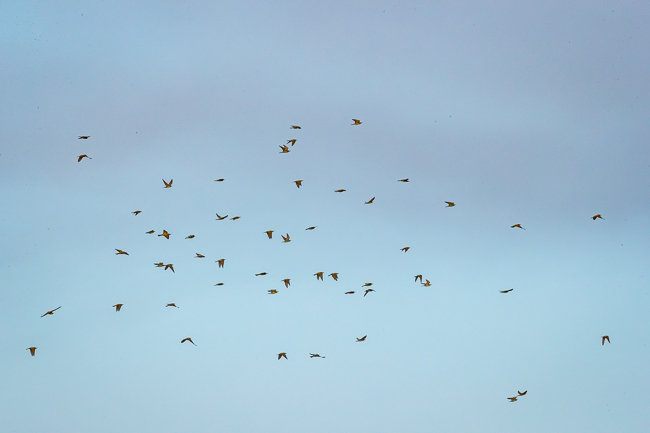
Getting closer would have been the ideal solution of course, but they had the urge to go and we didn't want to push them, so we left them to feed and a few minutes later saw them in a great band on the way south.
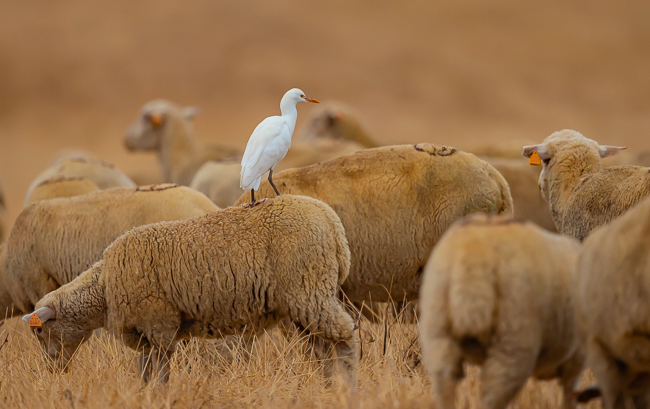
The prevailing colour on the Plains is now yellow and most birds keep their heads down, but not so Cattle Egrets which feed with the flocks of sheep in a constantly moving tableau across the scorched stubble.
It's rarer nowadays to see free-moving flocks of sheep, accompanied only by a man and a few dogs, as ever more land becomes fenced, but sometimes one still comes across them, a flock of hundreds lost in the enormity of their landscape.

Most other smaller species spend their efforts on being brown and unobtrusive, but cheeky Zitting Cisticolas, those butterfly-like grassland pygmies, occasionally stand their ground, inquisitively staring one down from the strands of roadside wire.
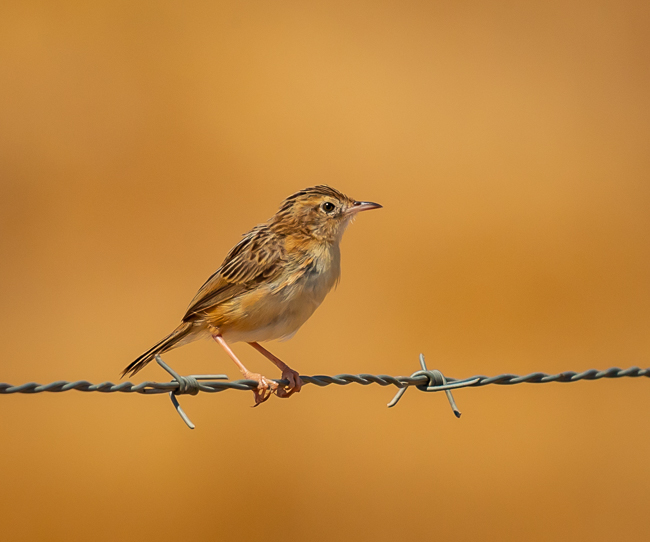
Talking about keeping one's head down, it's been an interesting time for Little Owls recently, as they take things to extremes ... take a look at the picture below - there's a Little Owl tucked away there,
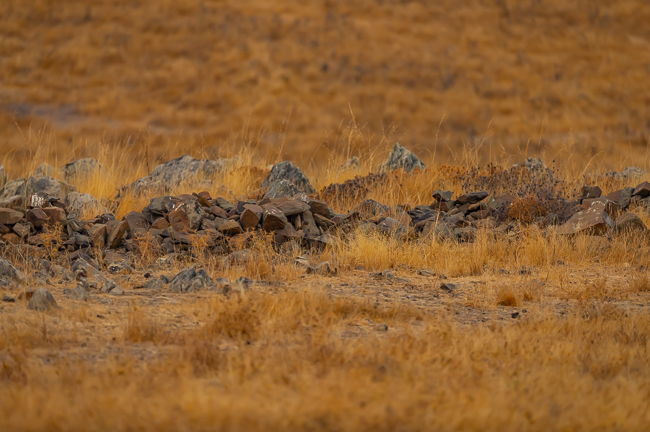
but they're the masters of camouflage and inconspicuosity when they want to be.
A slither of his head is visible below those two diamond-shaped rocks in the middle of the frame as he warily keeps an eye on me, the intruder into his domain.
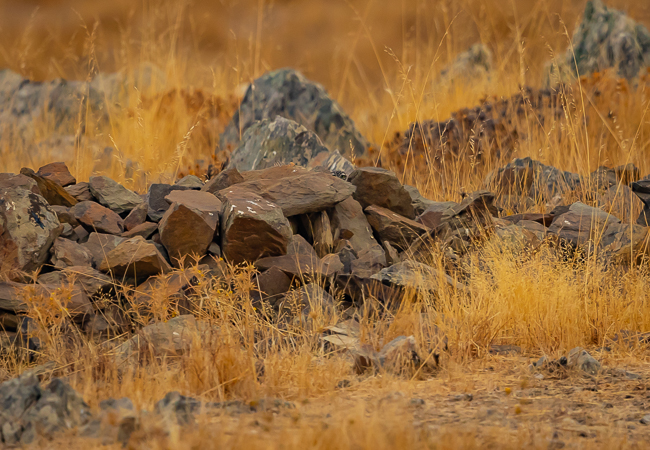
There's a large and stable population hereabouts, and the following few shots are just some of the Little Owls I've been able to photograph during the last two weeks.
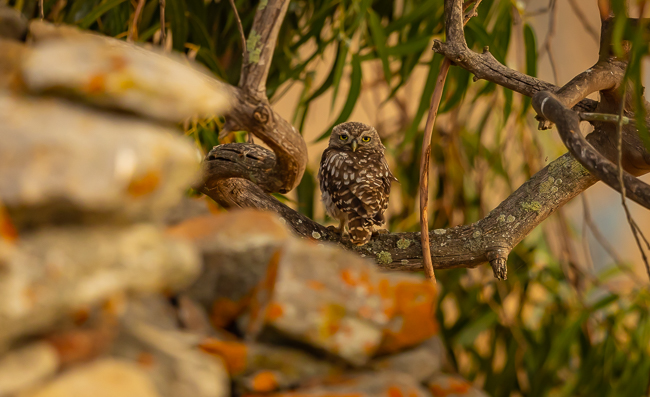
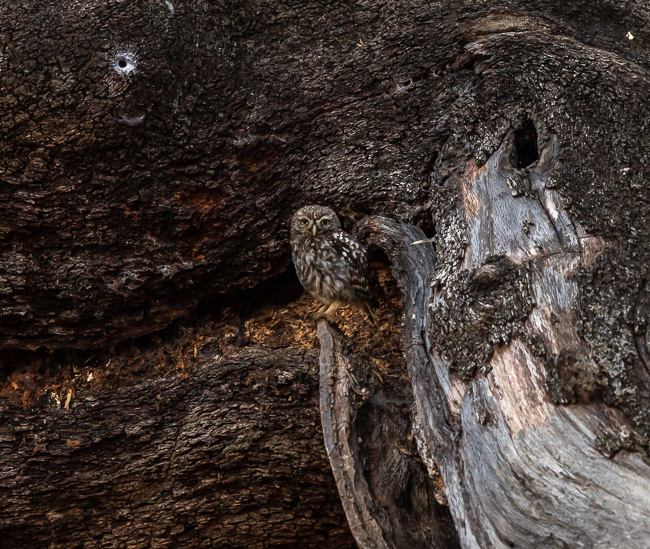


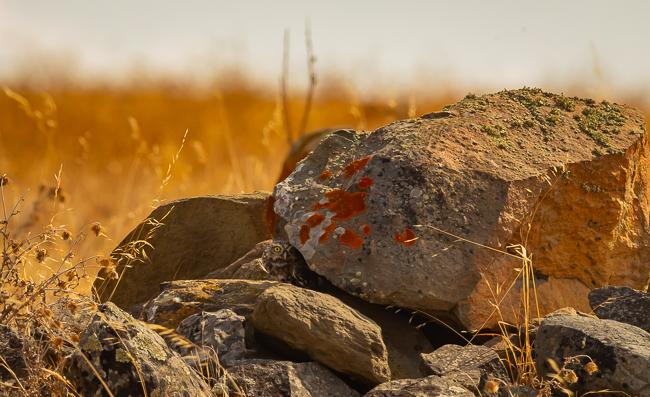

They seem to be able to blend into any background and we pass dozens daily without noticing I'm sure, but every now and again, like this family I found last month, they seem to mind not one jot to be as visible as they choose!
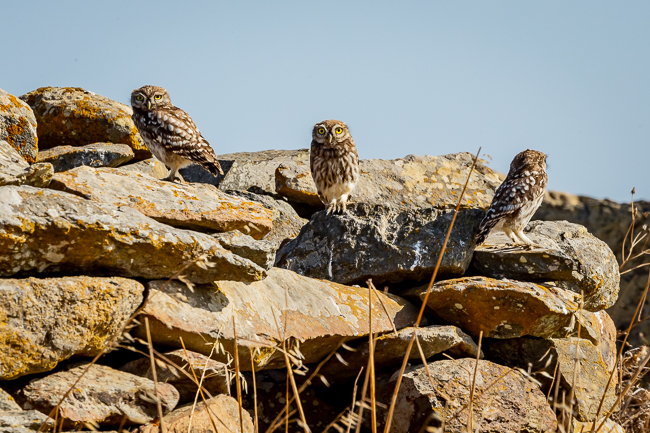
However, most of the time being a wildlife photographer involves many hours of patient waiting, and it's never a foregone conclusion that the hours or the patience will be rewarded.
Take my three hours in our Water Rail and Kingfisher Hide a couple of days ago for instance ... I was watching a female Blackcap when my eye was drawn to a shadowy, eye-lined form deeper in the same bush ... what could that be?
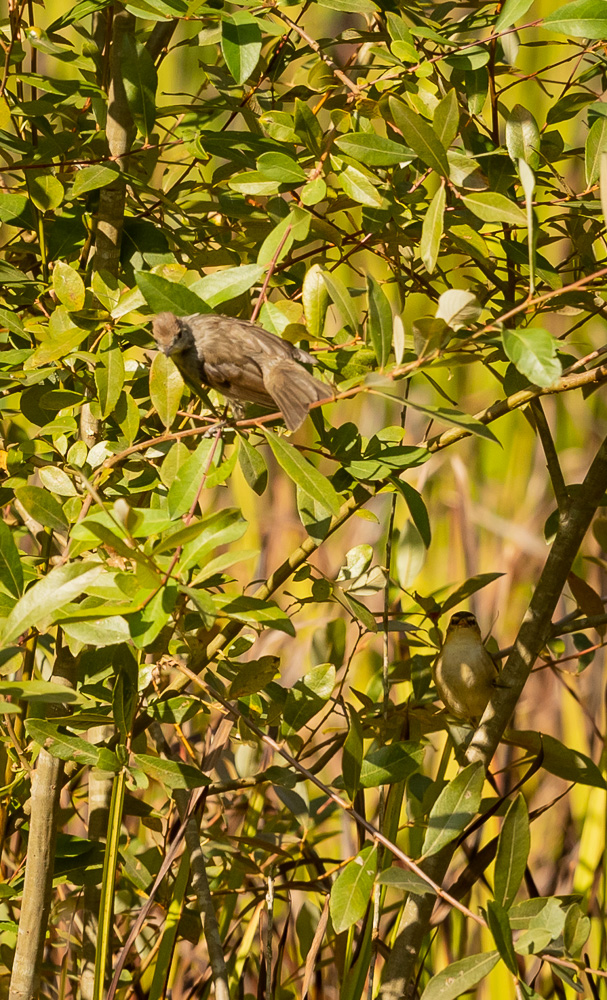
Was it a Cetti's?
No, that eyeline was too bright.
What else has an eyeline that bright? Could it really be a Sedge Warbler?
They're not resident here, only passing through on migration, so it's quite a red-letter day to catch a sight of one near the Quinta ...
It dropped down into the reeds and I could see the little blighter deep inside, (streaky head, definitely not a Cetti's Warbler), and chipped away at the clues. No central stripe, so sadly not an Aquatic Warbler - that really would be a coup! - and the eyeline finished distinctly, so not an errant Moustached Warbler either, (which would have been another coup), so a Sedge Warbler it must be, and lovely to see him it was.
But would he come out and give me a proper shot?

Of course not!
I followed him with my five and a half kilos of lens through the next 15 minutes, my arms aching more with each passing second.
I couldn't let him out of my view, for he was invisble to the naked eye, but he kept well hidden the whole time just behind the first scattering of reeds as he preened.

Then he started to feed and moved tantalisingly towards me ... and then, sadly, away again, until I lost him as he settled ever deeper back into the reed-bed.
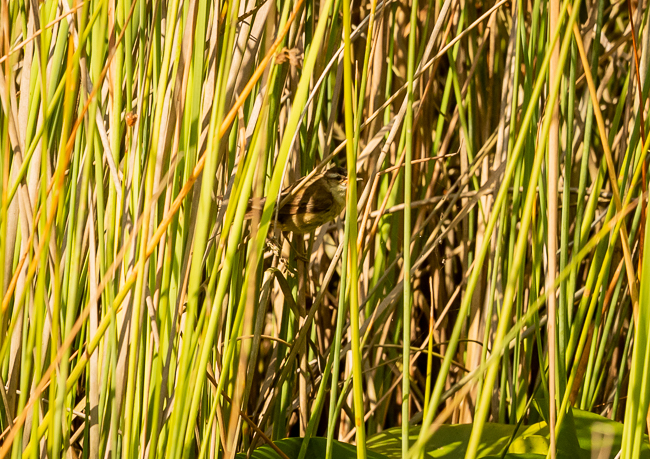
The best I could ever grab was the shot below.

Mind you, after the first ten minutes or so it was only ever going to be a lucky shot, as it became more and more difficult to keep the camera steady, my mind dreaming of my missing monopod, my shivering forearms shaking with the effort.
So no result that morning despite the effort.
Ahh, well, there's always another day, and the morning wasn't entirely wasted as I did grab a couple of nice shots of a Red-veined Darter,

and my faithful male Water Rail posed for a second or two as well, before he too slipped back into the reeds on the other side of the river.
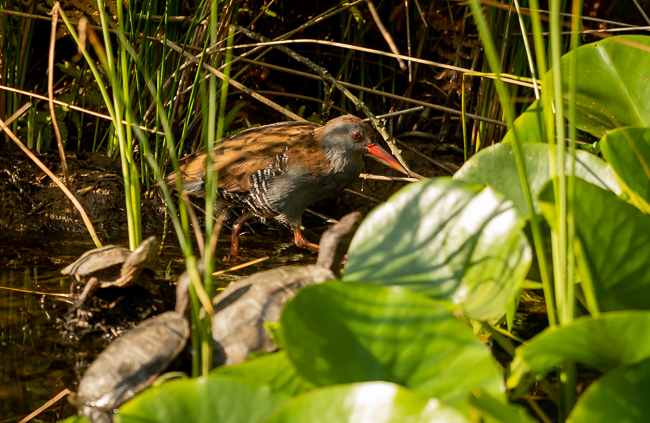
Looking forward to tomorrow already!
